One of the oldest towns in Europe, Lisbon is known for its delicious cuisine, distinctive artwork, and soulful music, among other things. Not to mention its breathtaking scenery and the many hidden gems in Lisbon.
Thus, it should come as no surprise that the city welcomes more than a million tourists annually.
However, most tourists will fight the crowds at well-known tourist destinations like the Jeronimos Monastery, and the Belém Tower. Jorge, it would be best if you climbed the hills first. There are a lot more hidden jewels in Lisbon than you might imagine.
A trip to Lisbon will show you more than just the usual tourist route, from charming lanes in Alfama to the stunning murals in Bairro Alto. These undiscovered attractions will reveal Lisbon’s alluring and distinctly genuine side to tourists of all experience levels.
Are you trying to find Lisbon’s best-kept secrets? The best-hidden treasures in the city of seven hills are listed in this post.
About Lisbon City
Portugal’s largest capital city is Lisbon. This seven-hill metropolis, home to approximately 500,000 people, has existed for over 200 centuries.
Lisbon, which blends various cultures, fashions, and lifestyles, exhibits several contrasts between the historical and contemporary. The Portuguese capital, located next to the Tagus River and enjoys nearly constant sunshine, is recognised worldwide for its exceptional architectural design.
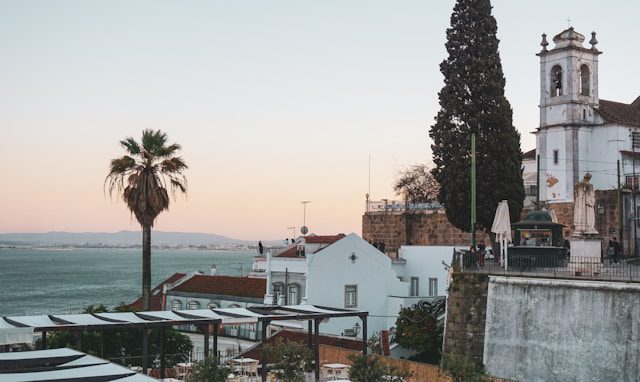
Lisbon provides many opportunities to explore, including its many monuments, neighbourhoods (Baixa Pombalina, Belém, Bairro Alto, Chiado, Bica, Alfama, and Mouraria), riverbank area, Fado houses, parks, gardens, and vantage points. Take in the city’s rich natural, historic, and cultural legacy.
Thousands of tourists visit Lisbon each year, drawn by its many landmarks, which include the National Pantheon, the Downtown, the Mediaeval Cathedral, the Mediaeval Castle of St. George, Belem Tower, Jeronimos Monastery, and Palace Square.
Lisbon’s cuisine is greatly impacted by its closeness to the ocean. Thus, fried cod, fried green beans, and grilled sardines on bread are characteristic Lisbon specialities (mostly during the June feast of the popular saints).
Another “ex-libris” meal associated with capital is the well-known Bife à Café. The traditional Pastel de Nata, or custard tart, is the most famous dessert in Lisbon. It is prepared in a former Belém factory and referred to as Pastel de Belém.
Travelling to Lisbon means experiencing new things. Lisbon is a charming city that draws tourists.
Lisbon, Portugal’s Best Kept Secrets
In recent years, Lisbon has grown in popularity as a travel destination and as a place where expats live. As a popular destination for tourists and foreigners, Lisbon has grown in popularity in recent years. You might easily lose track of your path in this metropolis. There are many opportunities throughout the city to veer off the usual route.
1. Lisbon’s Aqueduto das Águas Livres
Located to the east of Lisbon is the massive Aqueduto das Águas Livres aqueduct. Extending an incredible 19 km in length, it reaches a height of 65 metres. As one of our recommended viewpoints in Lisbon, it is surprisingly uncrowded despite the stunning panorama it provides.
Plus, no one else will appear in your photos. The breathtaking view across Lisbon’s northern region is well worth the effort required to reach the aqueduct’s summit. One must-visit site demonstrating Lisbon’s technological genius is the Águas Livres Aqueduct. This impressive 58-kilometer-long 18th-century man-made structure features stone pillars and graceful arches and was built to supply water to the city.
Visitors can also study the architectural beauty and historical relevance and enjoy vast views of Lisbon. Use the chance to roam the lovely aqueduct walk to observe the city from a different angle. The Mãe d’Água reservoir, now a museum displaying aqueduct history and technologies, is the focal feature. Ascending the aqueduct, uncover its secrets and view Lisbon’s skyline from above.
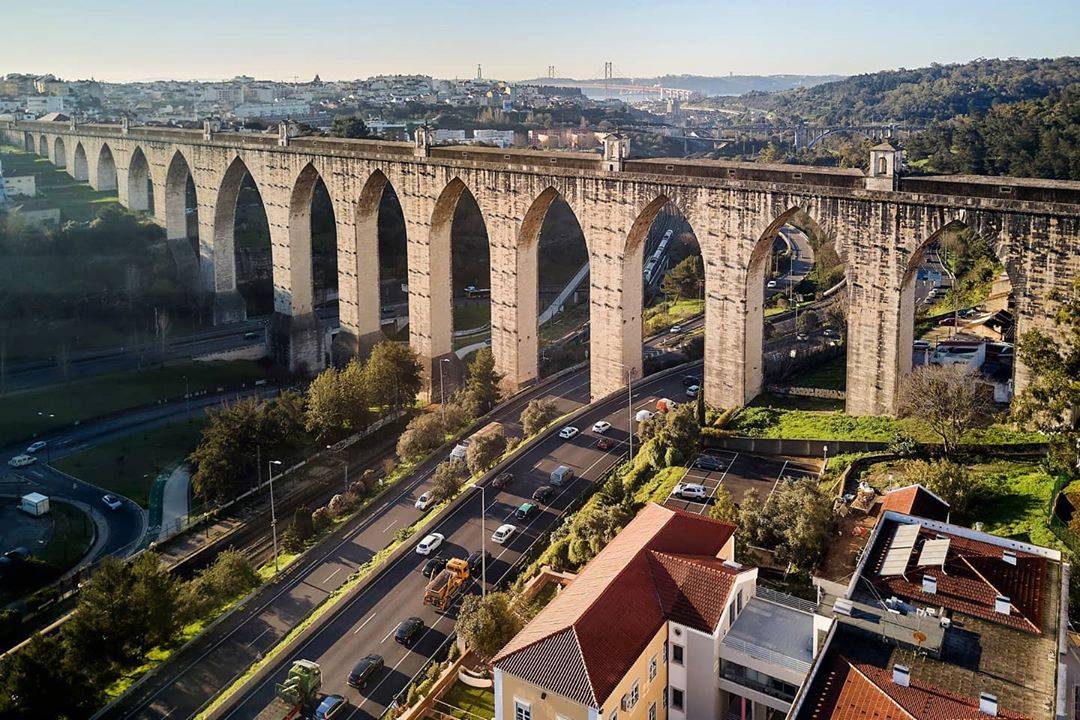
Everyone who visits the Águas Livres Aqueduct will discover an intriguing experience regardless of their predisposition in history, architecture, or the outdoors.One must-visit site demonstrating Lisbon’s technological genius is the Águas Livres Aqueduct.
Designed to provide water for the city of eighteenth-century, this 58-kilometer-long building includes magnificent stone pillars and arches. In addition, visitors may observe Lisbon’s architectural splendour and historical significance and enjoy vast views of the city Grab the chance to roam the gorgeous aqueduct walk to observe the city from a fresh angle.
The Mãe d’Água reservoir, now a museum displaying aqueduct history and technology, is the major focus. Ascending the aqueduct, uncover its secrets and view Lisbon’s skyline from above. Everyone who visits the Águas Livres Aqueduct is about to have a thrilling experience regardless of their inclination in history, architecture, or the outdoors.
2. Feira de Ladra flea market
One of Lisbon’s oldest markets, the Thieves’ Market (the Feira da Ladra), will offer what you want. This includes handcrafted paintings, blankets, rugs, and even Portuguese tiles called azulejos. If you’re not into crafts, they also carry electronics, retro stuff, apparel, books, and all the typical tourist souvenirs. You may purchase everything at Feira de Ladra, from genuine treasures to total garbage.
The thief’s flea market is how the name is translated. It used to be where you went to look for valuables that had been stolen. But the name has lost its meaning recently.
The market is held in a spacious plaza directly in front of the Pantheon Santa Engrácia and behind the church of São Vicente de Fora, and it succeeds admirably.
Feira da Ladra is the place to go if you want to outfit your kitchen with non-IKEA cutlery and china or if you want to buy unusual souvenirs from Lisbon.
Around the Campo de Santa Clara, a square by the National Pantheon, the traders here are entirely legitimate, offering anything from garbage to unexpected riches.
The market is held every Tuesday and Saturday from daybreak until early afternoon. While some vendors have small stalls, many others only use a blanket to cover their stores.
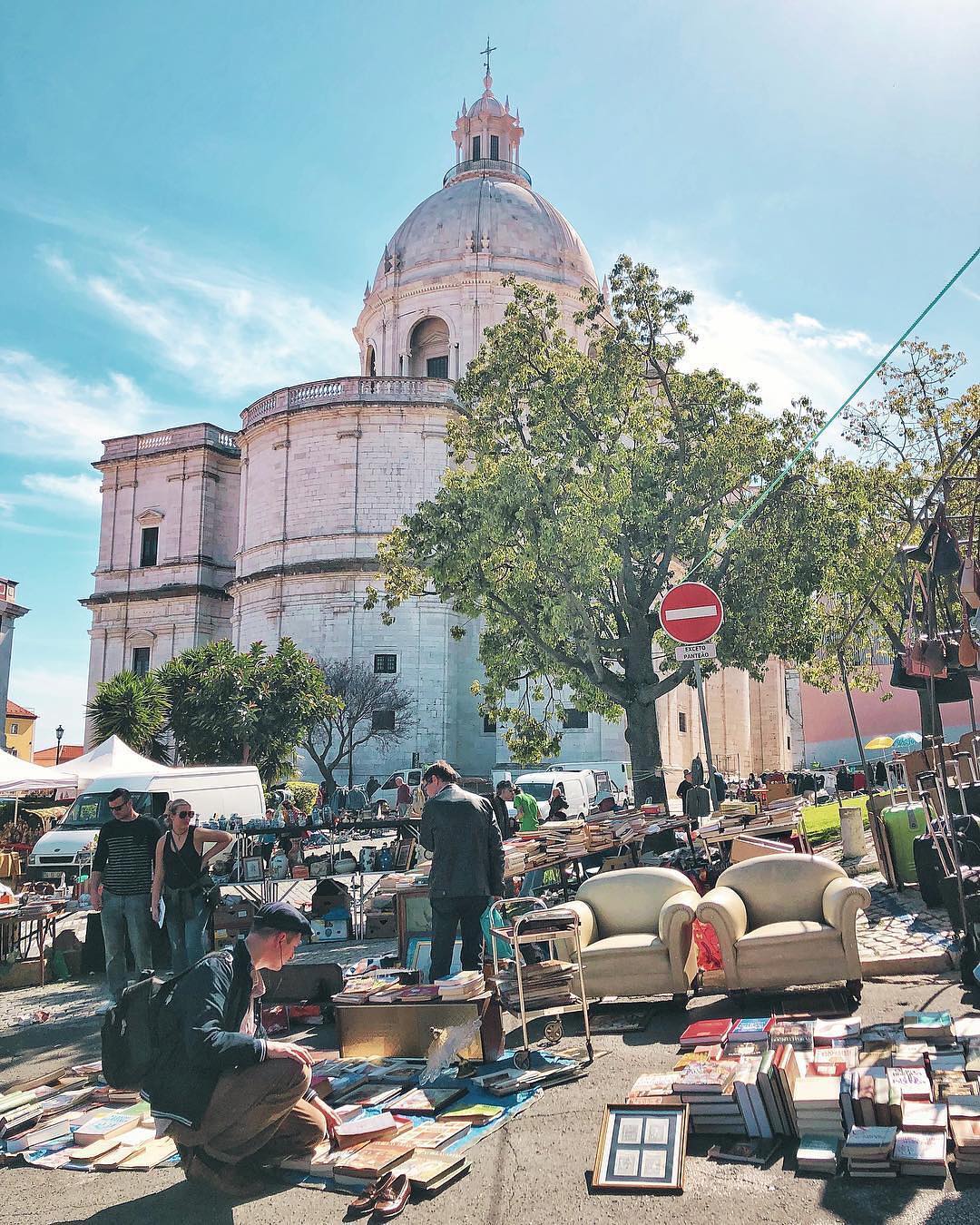
Here, you can find handcrafted artisan goods, CDs, books, clothing, coins, antiquities, military items, and furniture, so you can occasionally score a deal.
Everything and everything may be found here, including furniture, music, vintage periodicals and books, jewellery, clothing, and a tonne of other items from bygone eras.
3. Mouraria community
Mouraria used to be the most impoverished area of Lisbon. It makes sense since the Muslim Moors were forced into their neighbourhoods outside of the city by the Christians.
This neighbourhood maintains its cosmopolitan flair and rich history even now. It is a very genuine area of Lisbon. This is an awesome insider tip about Lisbon!
These days, this area also has a tonne of fantastic eateries and cafés. Since Mouraria is regarded as the birthplace of Fado, it is also a popular destination for nightlife.
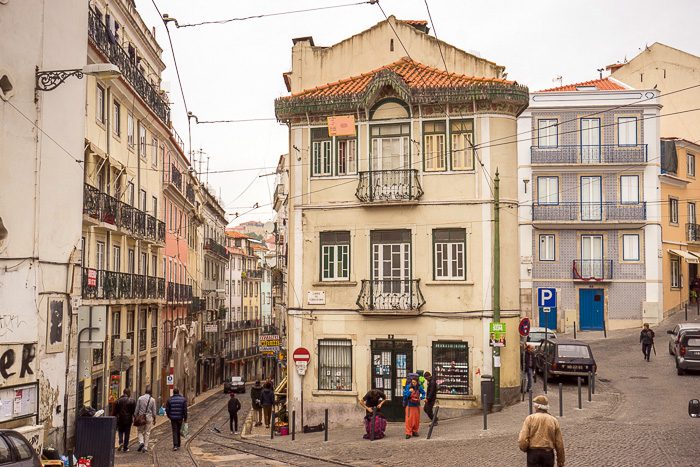
Tucked away under the fortifying shadow of the mediaeval Castelo de São Jorge is the Mouraria District, a representation of Lisbon’s rich and varied past. Known as the “Moorish quarter,” the history of Mouraria dates back to the Moors’ establishment of a walled city there in the eighth century, which also gave rise to the district’s name.
Even after the Christians retook Lisbon in 1147, the Muslim inhabitants of Mouraria, known as the Moors, coexisted peacefully for centuries. They originated in North Africa. Many continue living and working under Christian authority while happily coexisting with their Christian neighbours.
Over decades, this blending of cultures flourished, giving Mouraria its distinct flavour. It is discernible through the charming little stores, taverns, and homes with exquisitely tiled façades; these narrate stories of a multicultural neighbourhood that thrived despite conflicts between religion and culture.
Mouraria is a mash-up of modern city life and tradition today. Mouraria’s streets and close-knit homes are a testament to its past, but its vibrant modern food scene, diverse population, and artists breathe new life into its antique architecture.
With its restoration, Mouraria has blossomed into a colourful, energetic centre of modern-day Lisbon. It is a live exhibition of street art showcasing its ethnic diversity, with murals adorning the walls. Modern restaurants and traditional taverns coexist, providing a culinary adventure that blends traditional Portuguese fare with the flavours brought by recent immigrant communities.
4. Lisbon Stadium
Lisbon is divided on a single religious issue: Sporting or Benfica? Sporting is a popular club, but Benfica is the most successful one. Any football fan would find both clubs’ games to be highly attended and an unforgettable experience.

Tickets for both clubs can be purchased online and printed out yourself. The precise date and time of the match are normally announced just a few weeks in advance, and tickets are typically only available one to two weeks before kickoff.
International matches occur during the week, and league matches are often played from Friday to Monday.
Tickets for the most popular games are not available through the online store. If so, you will need to visit the stadium to purchase tickets. The two teams’ websites have details on the web shop and presale.
5. Lisbon’s Jardim do Estrela
In the heart of Lisbon, Jardim da Estrela is a verdant haven with plenty of activities for children.
Officially known as Guerra Junqueiro Garden, this charming neighbourhood park is affectionately known as Jardim do Estrela (Estrela Garden). Established in 1852, it is a great place for kids to play, work out, read, and have picnics. It features duck ponds, a playground, an antique wrought-iron bandstand, a kiosk, and a café with outdoor seating for small meals. It is located directly across from Basílica do Estrela.
It’s the site of a crafts and design market every first Sunday of the month, running from 10 a.m. to 7 p.m. on summer weekends; it’s one of the stages of an annual jazz festival.
One of the few open spaces left in the otherwise congested city of Lisbon, Jardim da Estrela is ideal for long afternoon strolls, picnics, and sunbathing. It also hosts a number of events, including Christmas markets, antique fairs, outdoor films, and jazz performances.

Families with small children from Lisbon particularly enjoy visiting the park. It has a large playground, a pond with turtles to observe, and two snack shops. Because of this, the Jardim da Estrela is one of our recommendations for families visiting Lisbon.
6. National Azulejo Museum
The Museu Nacional do Azulejo, or National Tile Museum is a must-visit if you’re in Lisbon and adore tiles.
This full-day Lisbon Tiles and Tales class and private tour, including the National Tile Museum, allows you to become a tile artist for the day. Visit Azeitão to study with a master tile maker how to create your tiles.
is a must-visit location in Lisbon. Before becoming a museum in 1960, it was a monastery built in the sixteenth century. The tiles in it date from the fifteenth century to the present.
In addition to learning about Portugal’s past, you may witness historical paintings on azulejos at this museum.
The Mosteiro da Madre de Deus is the most beautiful section of the museum. This chapel boasts spectacular azulejo tiles displaying biblical stories and lavish gold ornamentation.
The museum is open every day from 10:00 a.m. to 6:00 p.m. (except Mondays). It costs €8 to enter.
This full-day Lisbon Tiles and Tales class and private tour, including the National Tile Museum, allows you to become a tile artist for the day. Visit Azeitão to study with a master tile maker how to create your tiles.

7. Da Senhora do Monte Miradouro
One of Lisbon’s most famous sights is the Miradouro da Senhora do Monte. Despite its breathtaking panoramic view, it is also one of the most serene spots to gaze at the city. It’s a great spot to overlook the capital, at a short distance from the Miradouro da Graça.
Lisbon is one of the world’s hilliest cities, so visitors hoping for strolls along level streets may find it challenging to visit. That being said, this city’s hills provide amazing views.
Situated in Lisbon’s Graça neighbourhood, the Miradouro da Senhora do Monte is the city’s best miradouro (viewpoint).
From this vantage point, you can view the Tagus River, the 25 de Abril Bridge, thousands of vibrant buildings with clay tile roofs, and everything else this stunning city offers.
On its left are the Graça church and the castle, which overlooks the city and has buildings cascading down its hillside. The remains of Carmo, the Avenidas Novas in pastel tones, the river and the Tagus estuary all cast a radiance that highlights the rooftops in Baixa.
All of this from the location where Afonso Henriques, the first Portuguese king, gathered his army to capture Lisbon. Nine centuries later, everything is subjugated by the Lady of the Mount (Senhora do Monte) and her chapel, established in 1147.
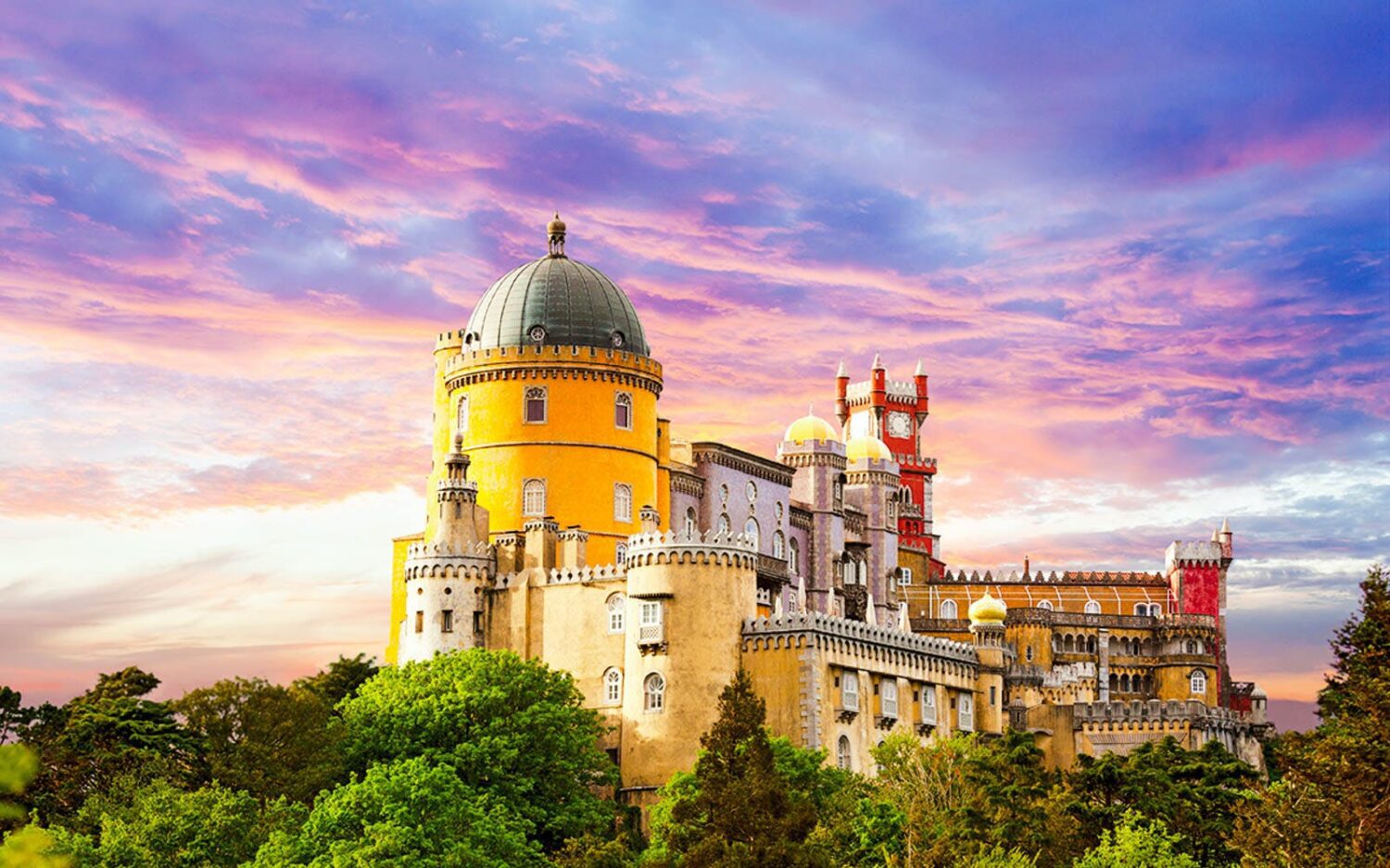
8. Ponto Final
Renowned riverfront eatery Ponto Final offers outdoor dining right next to the river. It is situated in Almada, across the Tagus River, and boasts breathtaking views of Lisbon.
This place fills up quickly, so make sure to reserve your reservation well in advance—like, three months in advance. Still, walk-ins do occasionally strike it lucky.
You will definitely want to tell your friends about Ponto Final, a hidden gem in Lisbon. Choose a nice day to unwind on this quiet pier with a buddy and have a perfect plan on how to spend your weekend In Lisbon. It’s located in the town of Cacilhas on the far bank of the Tagus River.
At Ponto Final, a little wharf with a secluded bay, fresh seafood is served, making it an amazing spot for a romantic meal. On the far bank of the Tagus, there are expansive views of Lisbon. The magnificent 25th of April Bridge is located to the left, while the imposing Statue of Christ the King is located above.
Lunch is the ideal time to eat at Ponto Final, and it’s well worth the effort because it’s an amazing seafood restaurant you will remember.
Take a quick ride across the river to Cacilhas by boarding one of the orange ferries at Cais Do Sodre. After getting off the boat, turn right and head out of town. You’ll finally get to a little beach after 10 minutes or so of walking along an abandoned wharf. Magnificent Ponto Final Fish restaurant sits right on the dock.
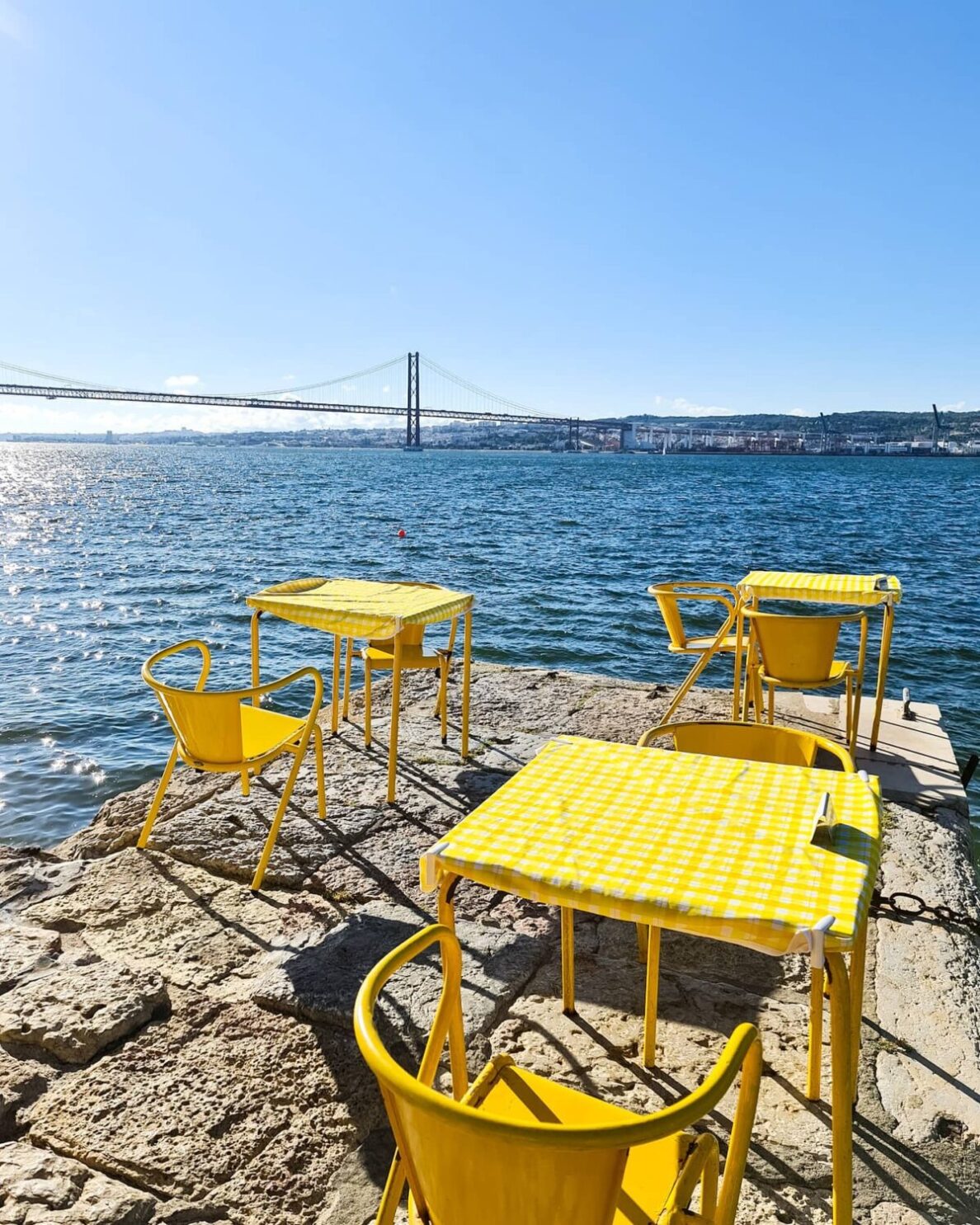
9. Ajuda Palace
The stunning Ajuda Palace, once home to the Portuguese royal family, is now a relatively unknown Lisbon attraction despite its unparalleled beauty.
Due to several political and economic upheavals, the palace took centuries to build after it was first commissioned in the wake of the 1755 earthquake.
The Ajuda Palace, perched on a hill with a view of Belém, was the Portuguese royal family’s last formal home before the 1910 revolution.
However, it is now a stunningly equipped palace that offers a fascinating and lovely substitute for the congested Sintra palaces.
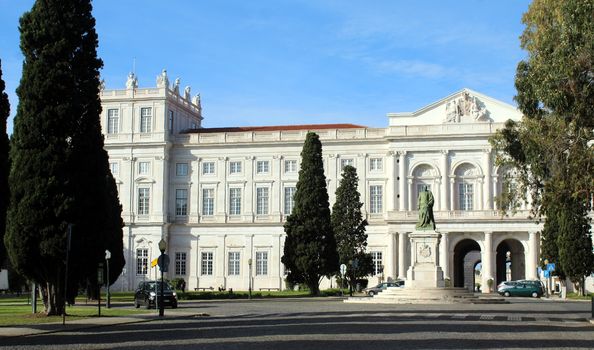
10. Arco da Rua Augusto
Most visitors to Lisbon will be in awe of the stunning Arco da Rua Augusta, which towers majestically over the Praça do Comércio, and will undoubtedly take pictures of it. However, very few will be able to enjoy the view from the top!
Built to commemorate the city’s rebirth following the disastrous 1755 earthquake, this elaborate triumphal bridge offers a breathtaking perspective of the Praça do Comércio.
One of the nicest off-the-beaten-path views in Lisbon is this one of Praca do Comercio from the top of the Arch of Rua Augusta.
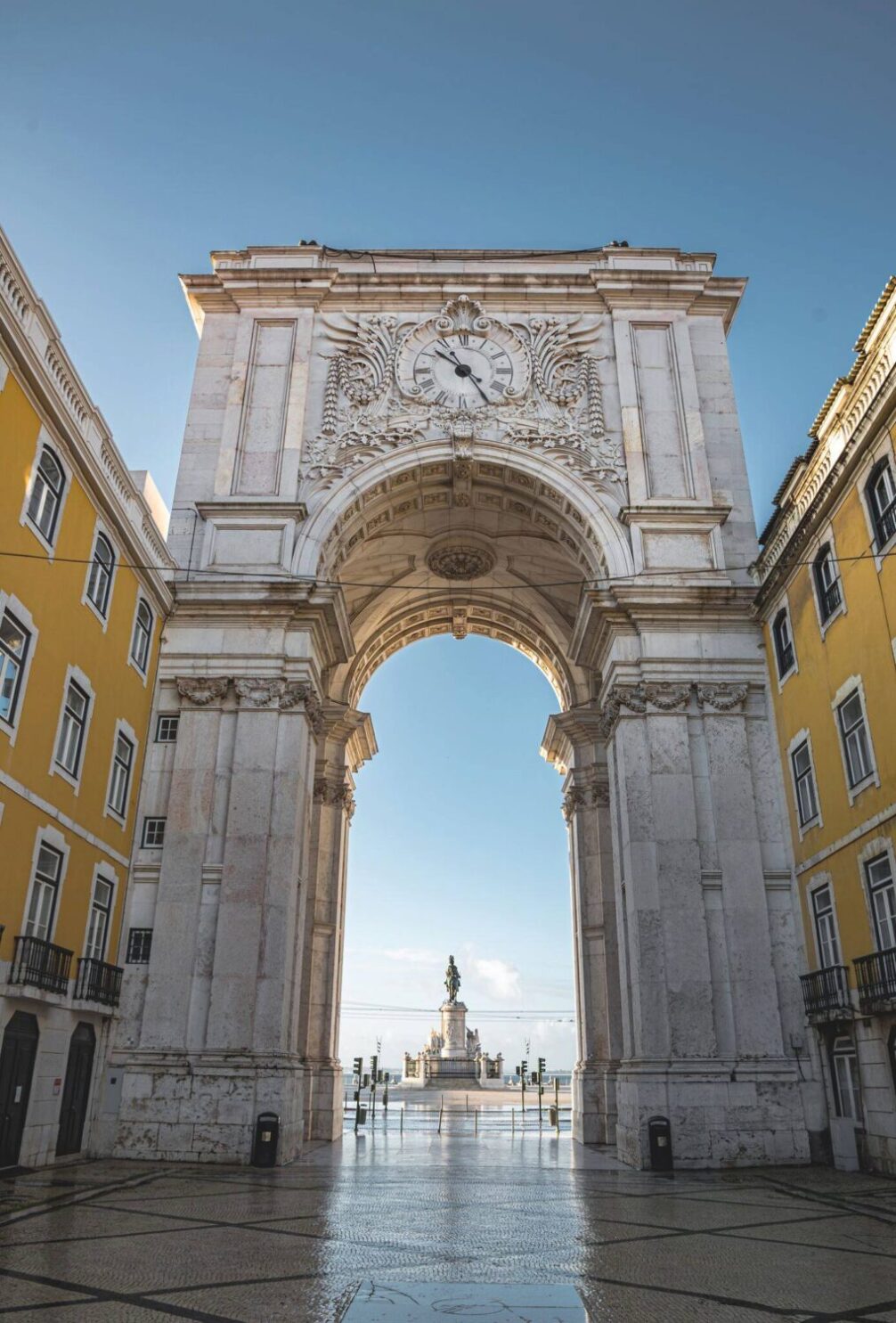
11. Basilica da Estrela
The Basilica da Estrela, also known as the Royal Basilica and Convent of the Most Sacred Heart of Jesus, was constructed in the eighteenth century by Queen Mary I. It has a remarkable cork-carved nativity scene, a massive amount of marble, and stunning views from its rooftop.
A significant church in Lisbon is the Basilica da Estrela. One of the final marvels designed by Mafra school architects, the basilica with a dome, was constructed in the latter part of the eighteenth century.
The church’s architecture is a blend of Baroque and Neoclassical styles, and it was modelled after the Basilica at Mafra. Two clock towers flank a central pediment on the front facade.
Tall Corinthian columns support the pediment, with allegorical figures representing Faith, Adoration, Freedom, and Gratitude. Due to the church’s hilltop location, its enormous dome is the most striking feature of the structure and can be seen from a distance. Visitors can reach the dome, which provides breathtaking views of the city.
The church, designed by the Mafra school architect Mateus Vicente de Oliveira, was built between 1779 and 1790. Following his passing in 1786, Reinaldo Manuel de Sousa, a baroque architect, oversaw its completion. The Basilica of the Sacred Heart is another name for the Estrela Basilica, which was dedicated to worshipping Jesus’ sacred heart.
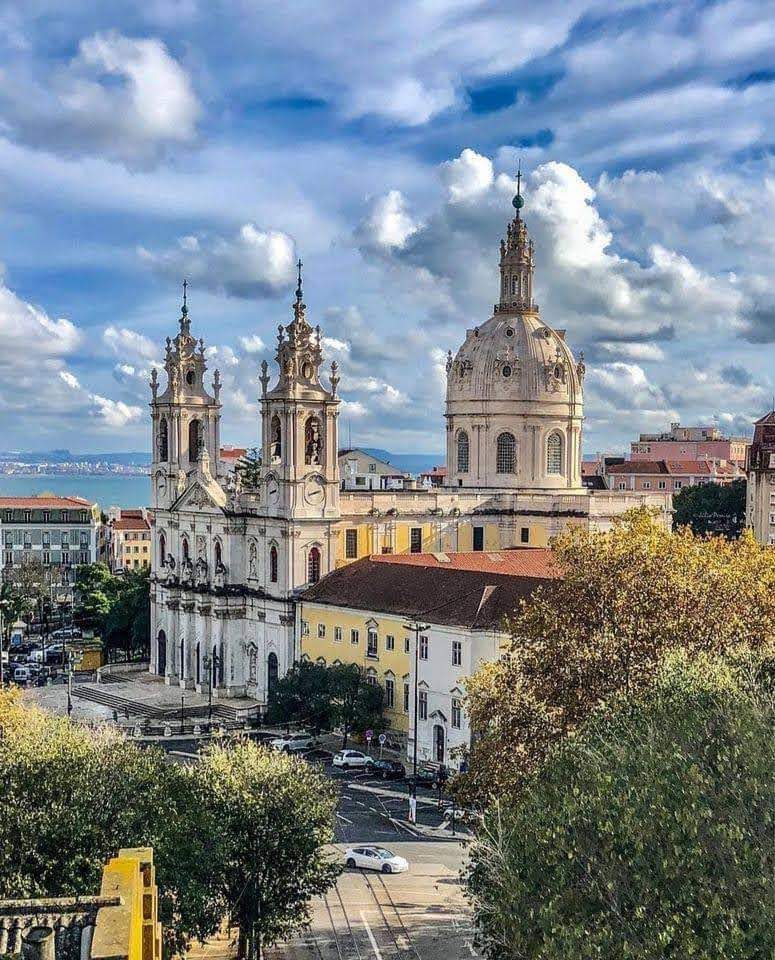
The ascent is well worth it for the unmatched views of the cathedral from the edge of the dome!
12. National Pantheon
Travellers searching for unique things to do in Lisbon should visit the National Pantheon, which has stunning views of the Tagus River and an interior that St. Peter’s Basilica greatly influenced in Rome.
The National Pantheon was once a 17th-century church before being transformed into a National Pantheon in 1916 (the dome wasn’t finished until 1966). It is an impressive sight to behold and is usually empty.
The National Pantheon, an iconic monument that embraces and honours the great men and women to whom the nation owes its recognition, is a symbol of Portuguese identity. A memory that endures and represents Portugal’s greatest posthumous honour. Let’s find out together.
Curious details regarding the National Pantheon’s turbulent construction process are found in its history. This procedure resulted from numerous historical occurrences the nation faced over a nearly 300-year span.
Because of this drawn-out procedure, the term “Obras de Santa Engrácia” (or “Works of Santa Engrácia”) came to be used to describe anything that takes too long or is unlikely to be completed.
The National Pantheon best exemplifies Portugal’s Baroque architecture. João Antunes, the architect, was inspired by Italian tendencies to build it, resulting in an inventive architectural design unique to Portugal.
Enjoy the magnificent design with inlaid stone and coloured marble and the intricate embellishments on the National Pantheon’s flowing walls. The enormous dome, roughly 80 metres above the ground, must also be highlighted.
Not only is a visit to the National Pantheon essential due to its architectural and historical qualities, but it is also highly symbolic of Portugal’s past.
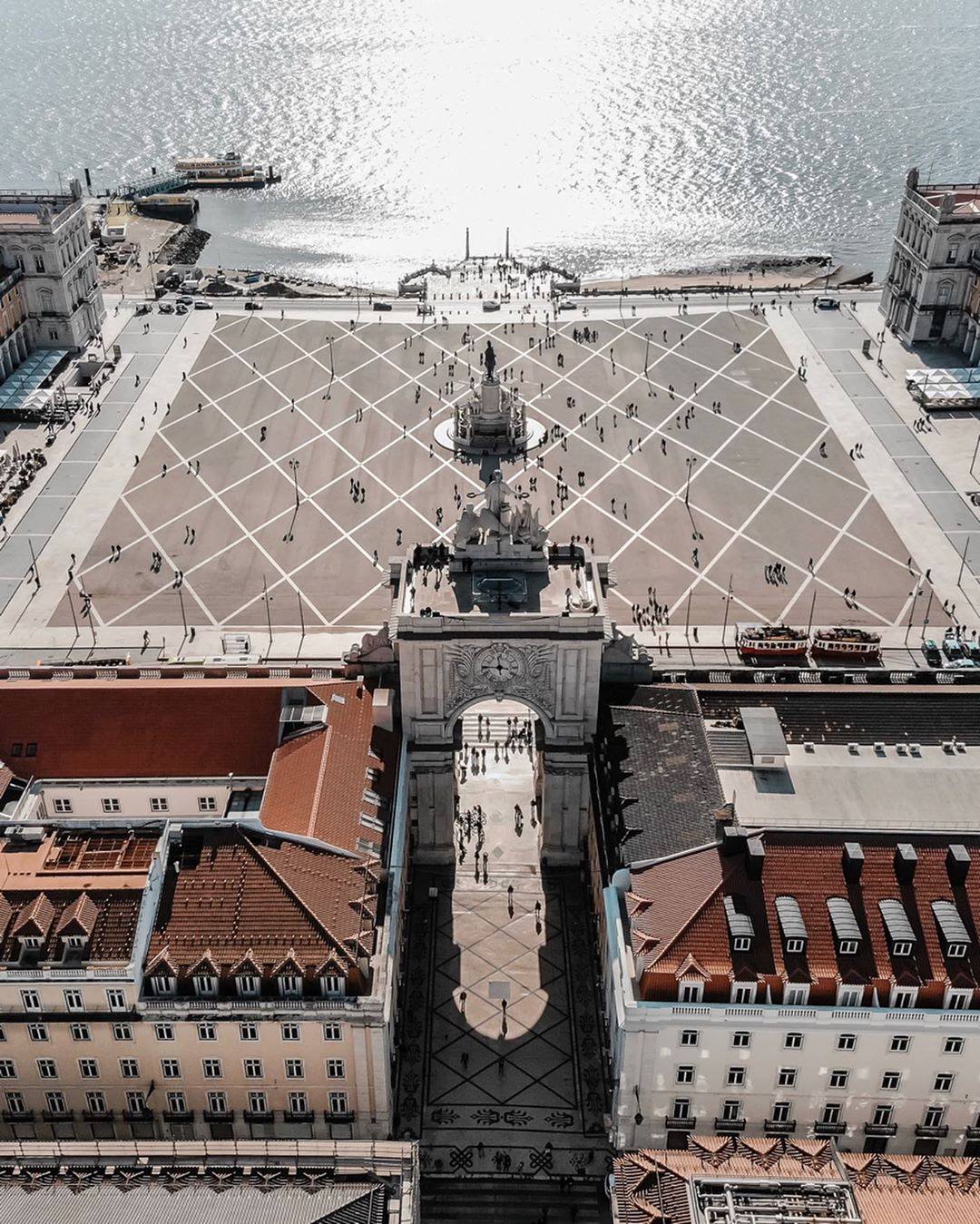
13. Nossa Senhora da Conceição Velha Church
Situated just a brief, level stroll (very uncommon in Lisbon) from Praça do Comércio, the front facade of the Church of Nossa Senhora da Conceição Velha is immediately remarkable.
Constructed in Lisbon’s renowned Gothic Manueline style, which is also the style of the Jerónimos Monastery and Belém Tower, the facade is definitely worth the small detour.
This is one of those hidden Lisbon attractions that is easy to find if you’re looking for it but equally easy to miss if you’re not. It’s hidden in plain sight.
The church is largely closed except on Sundays. Although it is worth exploring if it is open, the inside is less important to see than the outside.
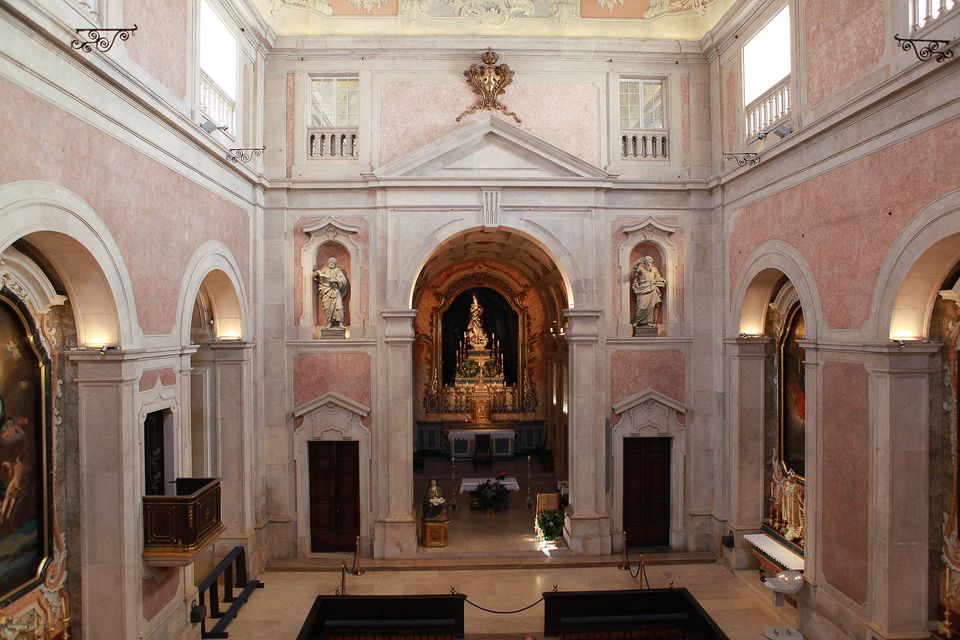
The church was restored after the 1755 earthquake destroyed everything but the Manueline facade.
Lisbon’s Fun Activities
1. Take a stroll through the city
Walking through the mediaeval suburbs of Alfama and Mouraria, which cascade down the hillside under the castle, is a must-do activity when visiting Lisbon.
Beautifully tiled palaces surround the winding streets, broken up by shaded squares with fragrant orange trees, pubs and cafés where sardines cook over flames outdoors. Pack your trainers and strive to get lost instead of worrying about following a path.
You’re sure to find a charming corner with breathtaking city views! Head to Casa de Fados in Mouraria in the evening. Once the residence of 19th-century vocalist Maria Severa, it’s among the greatest spots in the city to take in the sad fado sounds.
2. Attend a Festival
After the pandemic, Lisbon’s festival industry has recovered impressively and is growing even more. Nos Alive, a three-day waterfront event in Passeio Marítimo de Algés, is returning in July 2023. Red Hot Chilli Peppers, Arctic Monkeys, Lizzo, and Sam Smith are just a few of the incredible acts scheduled to perform.
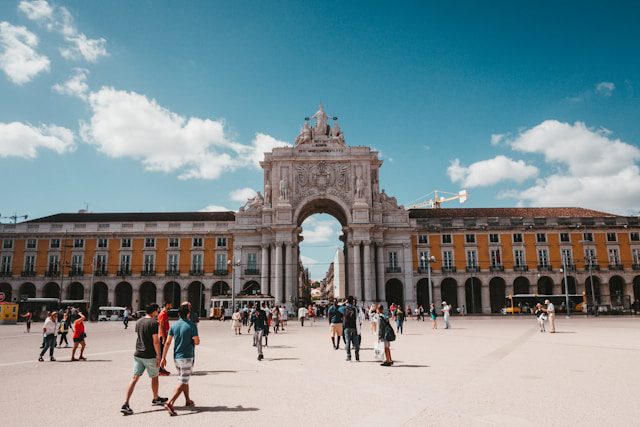
3. Look at Some Ceramics
Lisbon is well-known for its Instagram-worthy tiled facades, but the city has a longer history with ceramics than just patterned storefronts. Portugal has a large clay resource and has produced ceramics for generations; several of its ceramic artisans are well-known worldwide.
Go to Cerâmicas na Linha in Chiado to peruse the extensive selection for a price per kilogramme. You may discover dishes, bowls, and cups that cost two or three times as much back home.
The regional custard tart is a Portuguese delicacy that never goes out of style, with its seductive blend of sweet custard and crispy crust.
4. Check Out the Local Beaches
If you want it to be, Lisbon is a beach destination. Sometimes a day away from the city is just what the doctor ordered, whether it’s a trip to the adjacent fishing town of Cascais, which is a favourite with UK tourists searching for a more sedate alternative to the capital, or just lounging on the 26km-long Caparica and watching surfers.
5. Dine at One of the Eateries in The City
One might easily argue that Lisbon is one of the world’s gastronomic capitals, with something for everyone to enjoy, from Michelin-starred restaurants featuring the best local produce to tiny neighbourhood Portuguese tascas offering up delicious codfish cakes. Travelling without trying some of the creative meals created by this group of young, driven chefs competing with the best in New York, London, and other places is not recommended.
6. Go on a culinary tour
Foodies will love Lisbon, because of this, it can be challenging to cram everything into a single, limited weekend. During the afternoon, a Culinary Backstreets tour will teach you about local dishes and customs while letting you sample the finest Lisbon offers.
In the old town, you may go from eating sardines on the street corners to sampling Piri Piri, house-made hot sauces, and having a shot of ginjinha, a sour cherry liqueur popular among locals and visitors.
Lisbon Travel Tips
Here is our Lisbon sightseeing guide to avoid tourist traps.
1. Pay Close Attention to the Bill
The negative image of Lisbon taxi drivers endures throughout time. As true as the queue for pastéis de nata in Belém are, in fact, the winding journeys with completely needless detours created for the evident inflation of the final bill.
Just make sure you’re not getting scammed if you haven’t signed up for one of the numerous Lisbon transport apps yet. Under typical circumstances, the cost of transportation from the airport to the city core should be roughly 10 euros. Additionally, remember this time-tested tip: hail your cab at departures rather than arrivals.
2. Do Not Take Chances; Reserve a Seat
Lisbon’s cuisine has become even more delicious due to the city’s recent explosion of hip places and experiences, especially in the restaurant industry. However, there’s a catch: if you’re not fast enough, you might not be able to secure a table in most of the popular establishments (which is a risk every night of the week, incidentally).
In addition to booking a table, make sure you complete your homework, which is to read Time Out.
3. Take Note of the Menu’s Images

It’s a timeless and international classic: we firmly believe we can avoid the scourge of menus full of images of meals, whether they are put on the door or in a list style, but how many times have we been caught, in tourist mode?
Generally speaking, a good menu doesn’t need to be pushed too much if it is truly excellent. When strolling through Baixa, Belém, and other popular tourist destinations, bear this in mind.
4. Communicate in English and A Little Bit of Other Languages
Portuguese people are renowned for their friendliness as well as their language skills. Nobody expects us to speak Armenian, so don’t push your luck. You’re likely to discover folks who speak English better than average, and perhaps even some French (particularly in the elder generations) or decent Spanish.
5. Be Ready for Kisses
Naturally, Lisbonns have a strong habit of kissing each other on both cheeks. Portuguese people love to kiss. In Lisbon, you should be ready to give strangers two kisses on the face (or only one, in more formal contexts) when you greet them. Be ready to give strangers two face kisses (or just one, in more formal contexts) when you greet (and are greeted by) them.
6. Wear Comfortable Footwear
Lisbon has unmatched beauty on Instagram, but keep in mind that this is dangerous territory with its renowned seven hills and slick Portuguese pavement, which make strolling throughout the city quite difficult. Your ability to breathe will be put to the test to the fullest, but on the plus side, this city is essentially an outdoor gym. If not, you’ll regret not wearing your cosiest athletic sneakers. And forget about heels completely.
7. To Avoid the Lineups, Top Up your Metro Travel Card
You can use a Viva card to select the “zapping” option, which allows you to use a single ticket for nine different public transit options. If you wish to board a train or a lift, top up any amount at any automatic machine in the metro network. By doing this, you can avoid standing in queue.
8. Please be sure you choose your Fado House wisely
Portuguese traditional music is called fado; nothing fresh here, but it has lately become somewhat popular once more. But be advised not all locations, especially those serving visitors, are worth seeing. We are here to assist; these pages contain a list of the best websites where you may listen to fado.
Frequently Asked Questions
1. What Portugal’s hidden treasures are?
Many hidden beauties with distinctive experiences and breathtaking scenery call Portugal home. Among them are:
- Monsanto: Designed among massive rocks, this community presents a distinctive and beautiful scene.
- Piódão: A little secluded schist town with old homes and narrow streets.
- Renowned for its terraced vineyards and breathtaking river vistas, Douro Valley is ideal for wine enthusiasts.
- Tavira: A lovely Algyve town with calm beaches and old buildings.
- Sintra is well-known for its mysterious environment, rich gardens, fairy-tale mansions.
2. Which Lisbon part is the most beautiful?
Usually regarded as Lisbon’s most beautiful area is the Alfama district. Narrow, meandering lanes, traditional Fado music, old architecture, and breathtaking views of the city and the Tagus River define this area.
3. What Renowned Lisbon Object Is Here?
Famous for its UNESCO World Heritage monument, Belem Tower (Torre de Belém), Lisbon is An iconic emblem of the city, this old fortification was crucial for the Portuguese maritime discoveries.
4. Lisbon’s speciality is what?
Lisbon’s cuisine is its speciality; especially, Pastéis de Nata, a well-known Portuguese custard tart, is outstanding. Lisbon is also well-known for its Fado music, energetic culture, and old districts.
5. What Worth Visits Lisbon?
Lisbon has numerous attractions worth seeing including:
- The magnificent Manueline architectural work known as Jerónimos Monastery
- A mediaeval fortification and Lisbon emblem, Belém Tower
- The oldest neighbourhood in Lisbon, Alfama District boasts classic appeal with its small lanes.
- Among Europe’s biggest aquariums is Lisbon Oceanarium.
- Tram 28: An old tram line providing a lovely city tour.
6. Lisbon Must Visit Areas
Some must-visit Lisbon’s areas include:
- Alfama: Renowned for its Fado music and old-fashioned appeal.
- Baixa: Comprising retail lanes and great plazas, the downtown area
- Popular for its many food choices and energetic nightlife, Bairro Alto
- Chiado is a hip neighbourhood with boutiques, theatres and old cafés.
- Belém: home of museums and historical sites.
7. Which well-known Lisbon landmark exists?
Belém Tower (Torre de Belém) is Lisbon’s most well-known monument. Representing the Age of Discoveries, this famous fortification provides a window into Portuguese maritime past.
8. When would be the ideal time of year to visit Lisbon?
Lisbon is best visited in the spring (March to May) and in the autumn (September to October). The temperature is temperate and pleasant during these seasons, and compared to the busiest summer months, less people visit.
9. Which Of Lisbon’s Historical Sites Should I See First?
Among the most important historical sites in Lisbon are:
- Renowned Manueline architectural example and UNESCO World Heritage site Jerónimos Monastery
- Belém Tower: An old fortification much used throughout the Age of Discovery.
- An old castle providing broad city views is São Jorge Castle.
- Dating from the 12th century, Lisbon Cathedral (Sé de Lisboa) is the first church in the city.
- Originally a Gothic convent half destroyed following the 1755 earthquake, Carmo Convent is today an outdoor archaeological museum.
Last Thoughts
Lisbon, Portugal’s vibrant capital, is a city full of sites for discovering unique experiences and sights that enthral visitors. Discovering its rich history and culture helps you to see Lisbon as much more than just its popular attractions. Lisbon offers various secret spaces that really reflect its character, such the peaceful alleyways of Alfama and the amazing views from Miradouros.
These secret treasures in Lisbon provide a fresh perspective on Lisbon’s appeal independent of your travel background. As you explore these less-known treasures, you will uncover Lisbon’s real and seductive side, therefore transforming your trip there. Get off the main road and find this amazing city among the best-kept secrets of the seven hills.


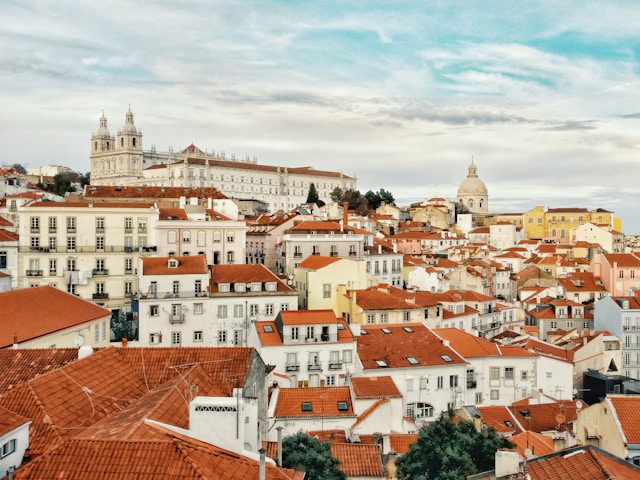
Appreciate this post. Will try it out.